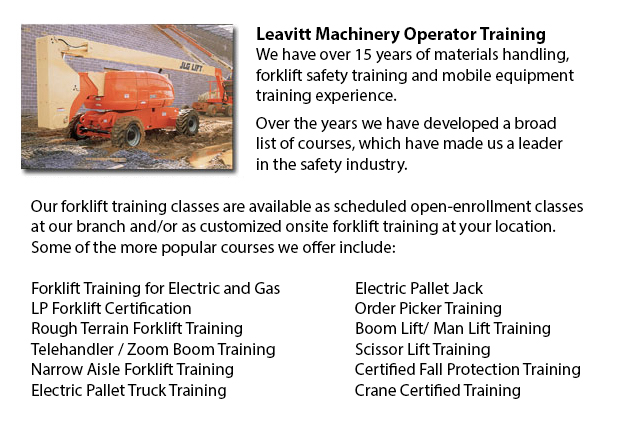
Ottawa Aerial Boom Lift Ticket - Aerial lift trucks can be utilized to accomplish certain different tasks executed in hard to reach aerial spaces. Many of the odd jobs associated with this type of lift include performing regular upkeep on buildings with high ceilings, repairing phone and power cables, lifting burdensome shelving units, and pruning tree branches. A ladder might also be utilized for many of the aforementioned tasks, although aerial lifts offer more security and stability when correctly used.
There are many models of aerial lift trucks available on the market depending on what the task needed involves. Painters sometimes use scissor aerial jacks for instance, which are grouped as mobile scaffolding, handy in painting trim and reaching the 2nd story and higher on buildings. The scissor aerial platform lifts use criss-cross braces to stretch out and enlarge upwards. There is a platform attached to the top of the braces that rises simultaneously as the criss-cross braces lift.
Container trucks and cherry pickers are a different kind of aerial hoist. They possess a bucket platform on top of a long arm. As this arm unfolds, the attached platform rises. Lift trucks utilize a pronged arm that rises upwards as the lever is moved. Boom hoists have a hydraulic arm which extends outward and hoists the platform. All of these aerial hoists require special training to operate.
Training programs presented through Occupational Safety & Health Association, acknowledged also as OSHA, cover safety methods, machine operation, upkeep and inspection and device load capacities. Successful completion of these training courses earns a special certified license. Only properly certified people who have OSHA operating licenses should operate aerial hoists. The Occupational Safety & Health Organization has developed rules to uphold safety and prevent injury when utilizing aerial platform lifts. Common sense rules such as not using this apparatus to give rides and ensuring all tires on aerial hoists are braced in order to hinder machine tipping are noted within the guidelines.
Unfortunately, statistics show that over 20 operators pass away each year while working with aerial hoists and 8% of those are commercial painters. The majority of these accidents are due to inappropriate tire bracing and the hoist falling over; for that reason some of these deaths had been preventable. Operators should make certain that all wheels are locked and braces as a critical safety precaution to prevent the device from toppling over.
Marking the surrounding area with noticeable markers need to be used to safeguard would-be passers-by in order that they do not come near the lift. In addition, markings should be set at about 10 feet of clearance between any power lines and the aerial lift. Hoist operators must at all times be properly harnessed to the lift when up in the air.
-
Ottawa Boom Lift Ticket
Ottawa Boom Lift Ticket - Boom Lifts are a table lift piece of equipment which could be lifted or lowered to varying heights, making this apparatus a useful tool for many manufacturing purposes. There are some unique types of Boom Lift consisting of... More -
Ottawa Boom Lift Operator Training
Ottawa Boom Lift Operator Training - The cherry picker work platform is a kind of work platform, which will typically have a bucket or platform at the hydraulic lifting system's end. The device is also referred to as a man lift, boom lift, basket cra... More -
Aerial Lift / Boom Lift / Man Lift / Scissor Lift Training in Ottawa
Scissor lifts are forklift tables which raise objects and people and supplies vertically. They are normally utilized in industrial, construction and commercial environments. A common use of scissor lifts is for lifting or lowering construction suppli... More -
Ottawa Crane Certification
Ottawa Crane Certification - The Crane Certification training program covers content suggested by industry concerning the safe and efficient operation of cranes. Individuals training would know the following: pre-operational, operational and post ope... More -
Ottawa Heavy Equipment Training Courses
Ottawa Heavy Equipment Training Courses - The first step required to take when selecting heavy equipment operator courses is determining the capacity you wish to work with heavy machinery. Like for example, you can take courses that will teach you ho... More -
Ottawa Fall Protection Ticket
Ottawa Fall Protection Ticket - Fall-related accidents are the number one reason of death in the construction trade. The potential for fall accidents very much increases based on the kind of work which is being completed within your workplace. So, be... More -
Ottawa Telehandler Operator Training
Ottawa Telehandler Operator Training - Telescopic handler Forklifts or telehandler forklifts are common industrial machinery seen in various construction business settings. The telehandler is a useful machine and makes for a valuable tool that can be... More -
Fall Protection Training in Ottawa
Regrettably, there is a large number of workplace injuries linked to falling and lots of fall-related deaths reported each year. Lots of these instances might have been prevented by having proper measures in place, offering proper training and equipp... More

Forklift Certification Ottawa
TOLL FREE: 1-888-254-6157
Ottawa, Ontario
forkliftcertificationottawa.com
Email Us
About Us


